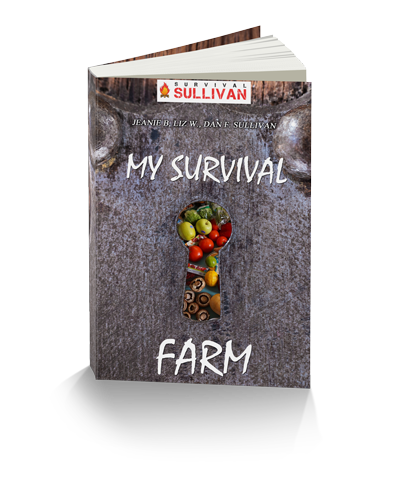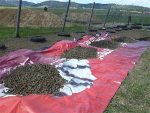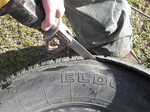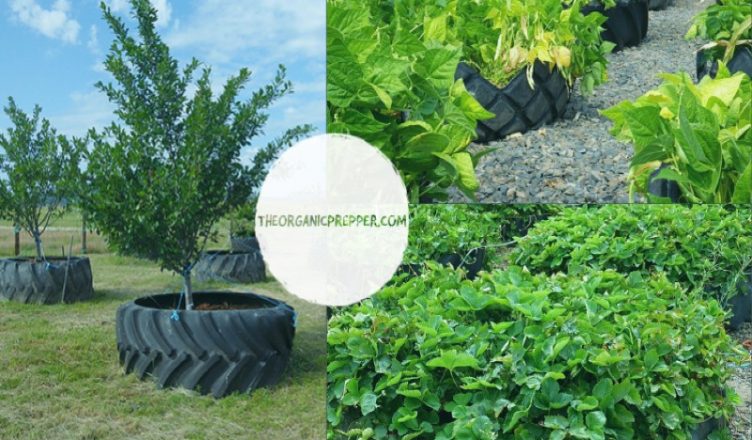As concerns about interruptions in the supply chain due to the pandemic hit the news, Victory Gardens are once again becoming popular. This is great news!
Building a garden infrastructure can be expensive, especially for those in urban or suburban environments where open space is limited. If you start pricing boards for building raised beds, for example, you’re likely to come away shaking your head in disbelief.
Surely there is some inexpensive way to establish a viable garden?
There is. I’m here to tell you about an excellent free resource for raised bed gardening which nearly everyone ignores because of a powerful but incorrect urban myth about the dangers. I refer to gardening in tires. Yes, tires. Car tires, truck tires, tractor tires…you name it. And, these can be used tires!

Why Tires?
When we moved to our rural homestead seventeen years ago, we thought it would be a simple matter to establish a garden. After all, how hard could it be? Plow, plant, water, and voilà: Food security.
We were wrong. We hadn’t factored in the heavy clay soil, pests ranging from deer to voles, and especially the tough prairie grasses. Every year we found our vegetables overwhelmed with weeds and baked into hard clay. No one who hasn’t experienced prairie grasses has any idea how pervasive, stubborn, and overwhelming those grasses can be. Since we didn’t have a tractor, our attempt to keep a half-acre garden weed-free was impossible.
For nine years, we struggled to plant in the ground, and for nine years, we failed. We tilled in compost and mulched. We pulled weeds, and we pulled more weeds. When it looked like we might succeed with a modest patch of beans or peas, the deer would invade, or the voles would dig things up (or an early frost would hit), and that would be the end of that.
Finally, we decided we had to look outside the box. We stepped back, identified our problems, and then addressed them one by one.
After some experimentation, here’s what we did. We paved the garden area with old billboard tarps (to control the weeds), anchored them with gravel (to hide the tarps as well as provide drainage), and brought in tires ranging in size from truck to tractor. We filled the tires with a mixture of topsoil, compost, and sand. We arranged a drip irrigation system throughout. As a result of these efforts, we went from zero to nearly self-sufficient in fruits and vegetables inside of two years.
The combination of tractor tires, tarps, gravel, and eight-foot fences (against deer) pretty much solved our gardening issues. True, we don’t have a lovely “traditional” vegetable garden with neat rows of perfect vegetables. Instead, we have rows of massive tractor tires blooming with lush vegetation. We even planted our fruit trees in tires.
And no, we aren’t poisoning ourselves.
The Power of an Urban Myth
But aren’t tires toxic? No.
This myth sprang up from a single article in the July/August 1997 issue of Organic Gardening magazine. The article cited two researchers: One in Australia and the other with the USDA.
Someone with the now-defunct website TireCrafting got hold of the Australian researcher, who confirmed the Organic Gardening article misquoted him. He never claimed tires would poison food plants; he merely observed that he knew of only one toxin in the rubber of tires, namely zinc. Zinc, which is leached from burned tires, ground-up tires, and the tire dust washed or blown from highways, is toxic to some plants. In tires, however, zinc is bonded and will not leach.
To confirm this information, I contacted the USDA representative, now retired. He kindly sent me no fewer than eleven publications he authored, attesting that zinc – when bound up in tires – is inert and will not leach. It’s only when tires are ground up that zinc in potentially toxic quantities are released. I have no intention of grinding up any tires in our garden, so I’m not worried about hazards.
I hope this information lays to rest any concerns about gardening in tires.
Raised Beds vs. Raised Containers
A distinction should be made between raised beds – which are open to the ground – and raised containers, which have closed bottoms (though still permitting drainage). Both kinds of beds provide similar benefits, though raised containers can be used on patios or other areas with no ground contact.
Our tire garden consists of raised containers since the tires are not in direct contact with the ground. This makes weed control far easier.
RELATED: 10 Ways to Sow Revolution in Your Back Yard
Building a Garden
So how do you grow in tires? Here are a few things we learned:



- A weed-control base is necessary, which still allows for drainage; otherwise, weeds and other pests (including voles) merely come up through the tires. The weed control has to be permanent, not temporary (such as newspapers or cardboard). We learned vinyl tarps work splendidly. We know others who use corrugated sheet metal as a base.
- Drainage is essential. If your tires are on a weed-control base – even concrete or another flat, impervious surface – be sure to provide a means for water to drain. Gravel is ideal.
- If your climate is hot, you can paint the tires white or another light, reflective color. In our northern region, the black tires increase heat absorption, extending the growing season a bit.
- Tires should have at least one sidewall cut out. We use a Sawzall for this purpose. Cutting out one sidewall allows a greater growing area. We keep the other sidewall intact and facing the ground, which helps keep the tire’s shape. Some people prefer to cut out both sidewalls, which allows the tire to be turned inside-out and painted.
- Size does not matter. Backyard suburban gardeners may want to stick with truck or car tires, which are easier to move and can be stacked in many attractive variations. With our large garden and rural location, tractor tires work for us. However because of the sheer weight and size of tractor tires, I don’t recommend using them unless you are certain their placement is permanent.
- Tires are particularly suited to drip irrigation since drip hoses can be coiled neatly in a circle. This saves both water and work.
- Weeding is easier. I can weed just as many tires as I have time or energy for, plus when I sit on a crate the weeds are at a more convenient level (knee-high instead of foot-level). I don’t grow fatigued from squatting or kneeling for long hours.
- The soil is never compacted and remains friable, especially since I add compost about every other year and pitchfork it in to feed the soil. The beds can also be easily mulched.
If you’re trying to come up with a frugal, economical way to garden and take control of a portion of your food supply, it’s time to think outside the box. Forget the urban myths and embrace a free, durable resource. Consider gardening in tires.

source ; Guest Contributor



